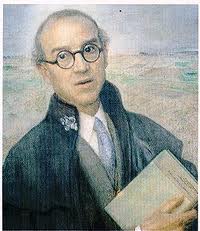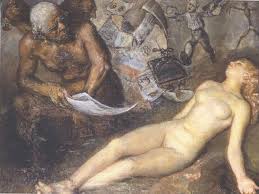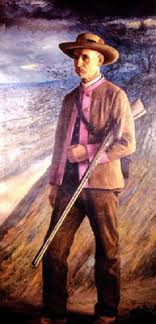Impressionism: Eugenio Hermoso
Eugenio Hermoso was an ImpressionistSpanish painter who was particularly famous in the first half of the 20th Century. He also completed a number of sculptures during his lifetime such as the bust of his fellow countryman, the famous 16th Century Spanish humanist, Benito Arias Montano.
Eugenio Hermoso (1883-1963)

Eugenio Hermoso was born in the town of Fregenal de la Sierra in Badajoz, Spain. He received a grant from the government of Badajoz which enabled him to study in Seville, at the 'Escuela de Bellas Artes de Santa Isabel de Hungría' (School of Fine Arts of Santa Isabel of Hungary). Here he was taught by other Spanish painters such as Gonzalo Bilbao and José Jiménez Aranda.
Following this, Eugenio Hermoso moved to Madrid in 1901 in order to study at the 'Real Academia de Bellas Artes de San Fernando' (Royal Academy of Fine Arts of San Fernando). To practise his art, Hermoso often went to the Prado Museum in order to copy the paintings of the Spanish masters.
From 1905 to 1906, Eugenio travelled to Paris where he came into contact with the vanguardist artists. In this year he also visited Belgium and many important cities in Italy. On his travels he also met many other Impressionist painters and also came to admire the Egyptian sarcophagi from the Roman period. Eugenio Hermoso also travelled around England, staying for a brief time in Hoylake which was then part of the county of Cheshire. Hermoso then held an exhibition in London in 1912.
After this, Hermoso won joint First Prize for National Fine Arts in Spain with Joaquím Mir and Valentín de Zubiaurre in the year of 1917. In 1918, Hermoso decided to settle permanently in Madrid. Tragically during this time, Eugenio's wife went insane and was committed to a psychiatric hospital.

His first great solo exhibition was held in Madrid in 1922 at the 'Salón del Museo de Arte Moderno' (Salon of the Museum of Modern Art). This exhibition was hugely successful as Eugenio Hermoso received many new commissions as well as selling many of his paintings. Hermoso's fame grew abroad as well and from 1934, Eugenio Hermoso toured Latin America, organzing exhibitions in Argentina, Brazil and Chile.
In 1941, Eugenio Hermoso was named an official Academic of the Royal Academy of Fine Arts of San Fernando and then a professor at the 'Escuela Superior de Bellas Artes' (Superior School of Fine Arts). As an academic, Eugenio Hermoso dedicated his research into producing a study of the paintings of Zurbarán, a Spanish painter from the Spanish Golden Age. This work, among many of his other academic works, has become an essential piece of reading for any student of Spanish painting.

The 1950s were a busy time for Eugenio Hermoso. In 1955, he published his own autobiography under the pseudonym of Francisco Teodoro de Nertóbriga. Also in that year, Hermoso was named as one of the judges for the Royal Academy of Fine Arts of San Fernando, in which he had to judge the prizes for engraving from the partner Academy in Rome. In 1956, a showcase of Hermoso's work was organized in Badajoz in the 'Casa de la Cultura' (House of Culture).
Eugenio Hermoso died in 1963 at the age of eighty. The following year, a tribute exhibition was held in the Goya room at the Circle of Fine Arts. On the centenary of his birthday in 1983, an exhibition was held in Extremadura entitled 'Eugenio Hermoso y la pintura de su época' (Eugenio Hermoso and the Painting of his Era).
Some of Eugenio Hermoso's most famous works include the paintings 'La Merendilla' (The Merendilla), 'A la fiesta del pueblo' (At the Town Festival), 'Tierra, Fauna y Flora' (Earth, Fauna and Flora), and 'Prisión y muerte de la pintura' (Imprisonment and Death of Painting).
